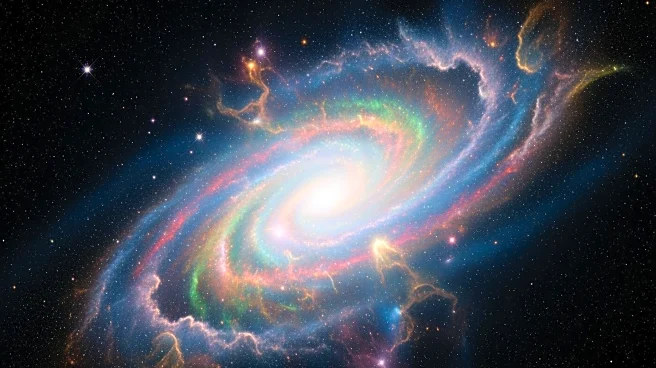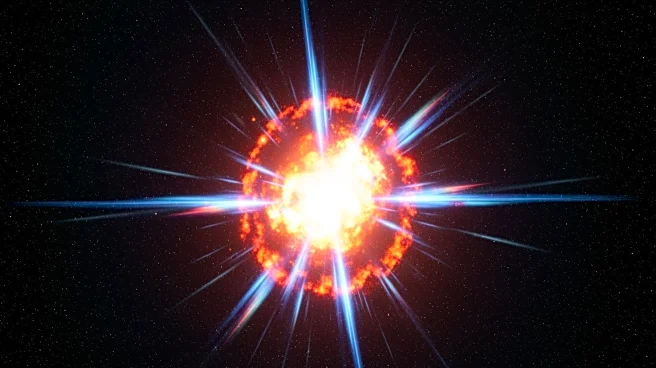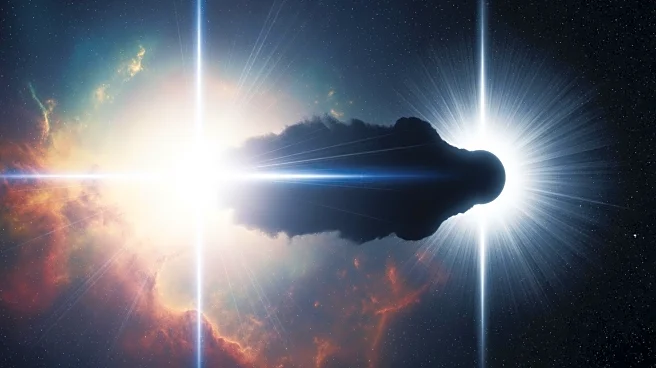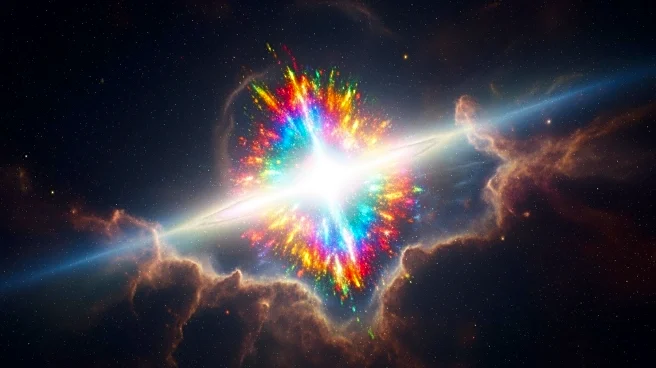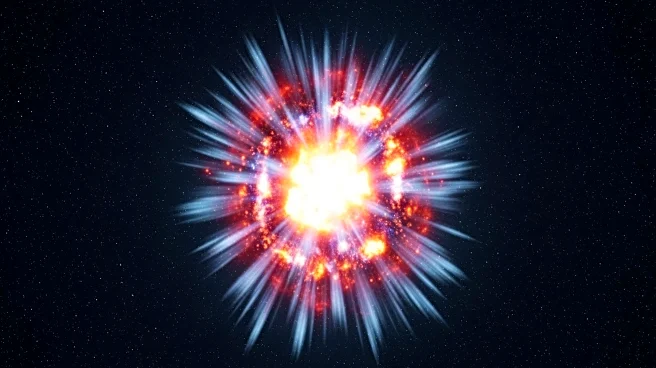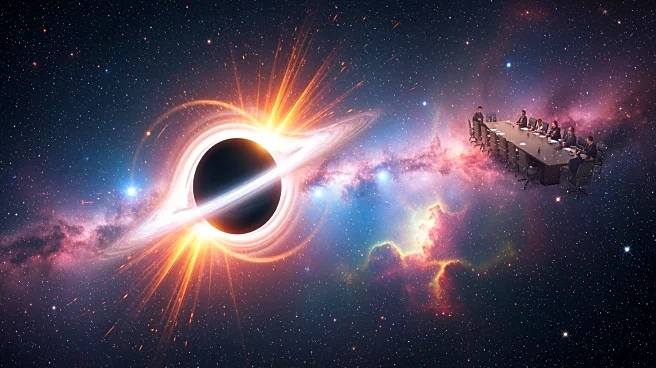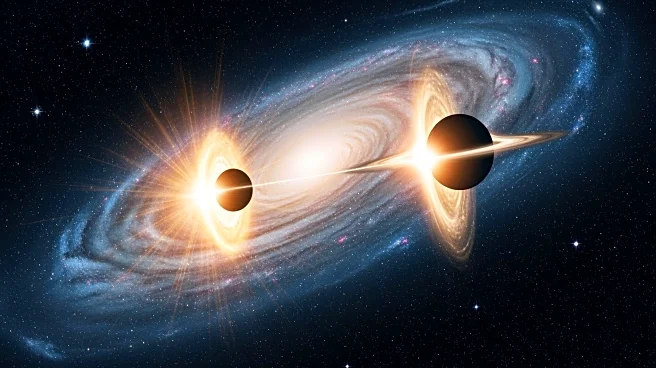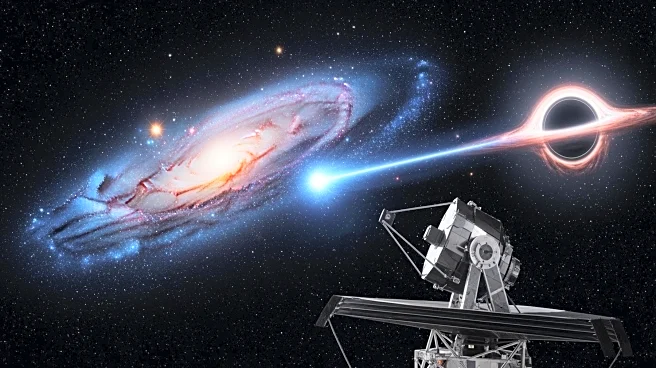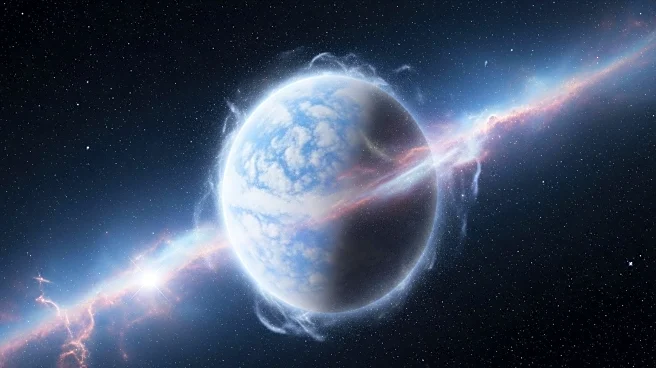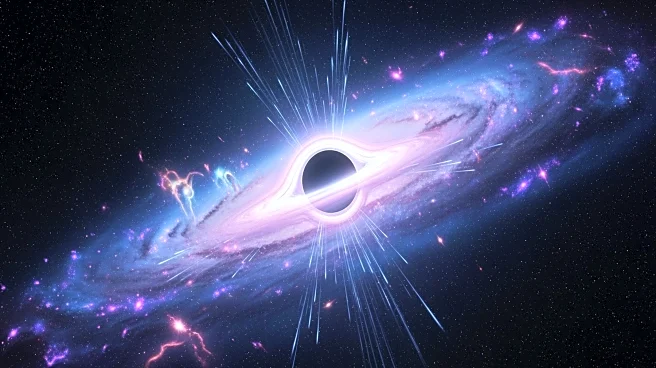What's Happening?
The James Webb Space Telescope has confirmed that GRB 250702B is the most energetic gamma-ray burst (GRB) ever recorded. Detected by NASA's Fermi telescope on July 2, 2025, this GRB lasted for an unprecedented
full day, challenging existing models of cosmic explosions. Typically, GRBs are brief, resulting from the collapse of massive stars or the merger of compact objects. The event's energy and duration have prompted scientists to investigate its origins further.
Why It's Important?
The discovery of GRB 250702B's extraordinary energy levels could reshape our understanding of stellar deaths and the conditions that lead to such powerful cosmic events. It raises questions about the environments that produce GRBs and the potential for unknown astrophysical processes. This finding could influence future research in astrophysics, leading to new models and theories about the life cycles of stars and the dynamics of the universe.
What's Next?
Researchers are continuing to study GRB 250702B to determine its exact cause. They are exploring possibilities such as an unusual collapsing star or a black hole consuming a small star. The event's host galaxy, characterized by its large size and dustiness, may hold clues to the GRB's origins. Ongoing observations and data analysis will aim to uncover more about this rare cosmic phenomenon.
Beyond the Headlines
The study of GRB 250702B highlights the importance of advanced telescopes like the James Webb Space Telescope in expanding our knowledge of the universe. It also underscores the need for continued investment in space exploration and technology to uncover the mysteries of cosmic phenomena. The event serves as a reminder of the vast and dynamic nature of the universe, with many secrets yet to be discovered.
